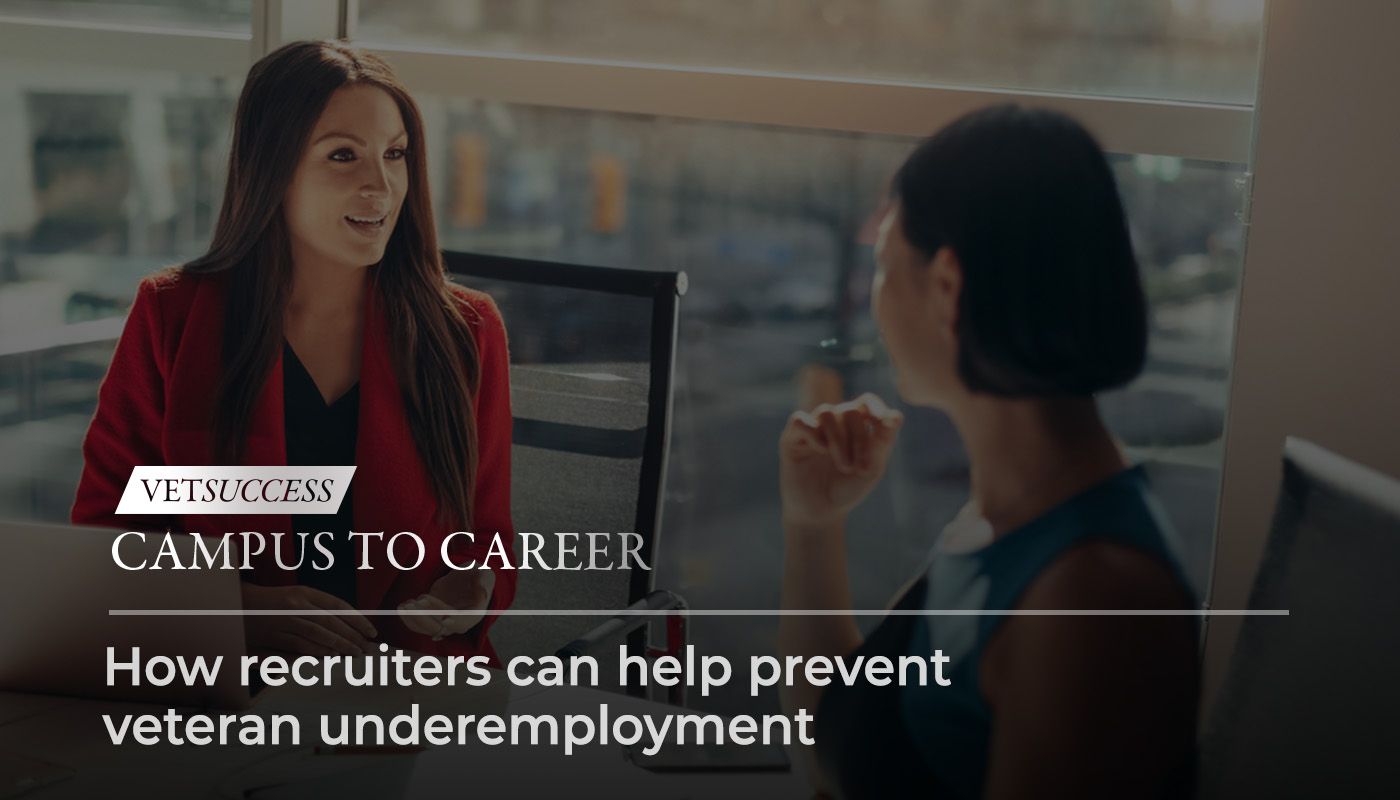
Today's corporate landscape is missing out on a valuable, yet untapped resource: military veterans. Despite serving in various professional fields and career levels within the military, veterans are still an undervalued talent pool in today’s workforce.
According to a recent study by ZipRecruiter and the Call of Duty Endowment, 33% of veterans experience underemployment – meaning they are significantly overqualified for their current position. Despite valuable experience from years of military service, veterans are 15.6% more likely to be underemployed than their non-veteran peers.
This doesn’t just apply to veterans entering the civilian workforce straight out of service – veterans with college degrees face underemployment too.
Veterans with bachelor’s degrees enter the corporate workforce with twice as much work experience than non-veterans with the same level of education, according to LinkedIn’s “Veteran Opportunity Report.” They’re also three times more likely than non-veterans to have a graduate degree or higher.
"Veterans with bachelor’s degrees enter the corporate workforce with twice as much work experience than non-veterans with the same level of education...Despite this, veterans are half as likely as non-veterans to reach senior leadership roles in the corporate world – and even when promoted, their progression is notably slower than their peers."
Despite this, veterans are half as likely as non-veterans to reach senior leadership roles in the corporate world – and even when promoted, their progression is notably slower than their peers. According to the same LinkedIn report, on average, it takes veterans two more years than non-veterans to reach their first director or vice president position.
This disparity often begins at the campus recruiting level, where student veterans find themselves in entry-level positions that fail to leverage their skills and potential. The disconnect between the skills acquired in the military and the civilian labor market exacerbates this issue, leading to prolonged delays in professional development.
Though student veterans may not have experience in a civilian workplace, many have developed critical professional skills during their time in the military that are simply incomparable to the typical college graduate.
To combat this critical mismatch, company recruiters must adopt a skills-first strategy when working with student veterans to ensure they are being placed in positions that are appropriately challenging and make the best use of their skills and experience. Skills-first hiring isn't just an act of goodwill for the veteran talent pool — it's a strategic decision for employers.
Skills-first hiring can help employers:
• Expand their talent pools
• Improve equity and representation
• Create a workforce adaptable to the changing labor market
• Meet the skills demands of changing industries
• Bridge the opportunity gap between veterans and non-veterans
Military veterans are ready to apply their skills and experience in the civilian workplace but hiring processes are not always ready for them. By being intentional and strategic about veteran hiring, companies can tap into this diverse talent pool and unlock unparalleled value, foster innovation, and promote a culture of inclusivity and growth.
To learn more about how to advance student veteran employment, join American Veterans Group's virtual panel discussion, VetSuccess: Campus to Career on April 24, 1-2 pm EST.


